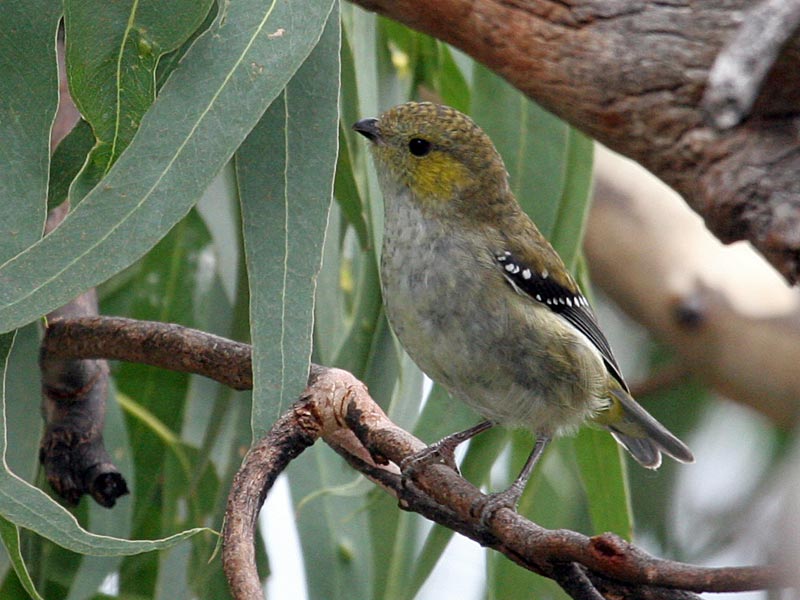- Forty-spotted Pardalote
Taxobox
name = Forty-spotted Pardalote
status = EN | status_system = IUCN3.1
trend = stable
regnum =Animal ia
phylum = Chordata
classis = Aves
ordo =Passeriformes
familia =Pardalotidae
genus = "Pardalotus "
species = "P. quadragintus"
binomial = "Pardalotus quadragintus"
binomial_authority = Gould, 1838

The Forty-spotted Pardalote ("Pardalotus quadragintus") is by far the rarestpardalote , now being confined to the south-east corner ofTasmania .Description
About 9 to 10cm (3½-4 in) long, it is similar to the much more common
Spotted Pardalote , (Pardalotus punctatus), but has a dull greenish-brown back and head, compared to the more colorful plumage of the former, with which it shares range, and there is no brow line. Rump is olive, under-tail dull yellow. Chest white with light yellow tints. Wings are black with white tips, appearing as many (closer to 60 than 40) discrete dots when the wings are folded. No seasonal variation in plumage; juveniles slightly less colorful than adults.Small (9-10 cm) energetic passerine. Usually in pairs or small flocks. One of Australia's rarest birds, this species is declining, and is currently listed as endangered.
Distribution
Now found reliably only in a few isolated colonies on south-eastern Tasmania, most notably on
Maria Island and southernBruny Island . It is occasionally reported from the suburbs ofHobart . Sedentary or locally nomadic over its restricted range, it is declining in numbers. It is most successful on Maria Island, which is managed as a refuge, with introduced predators having been eliminated.Habitat
Relatively dry Eucalypt forests with high concentration of the
Manna Gum , "Eucalyptus viminalis", where it forages almost exclusively.Behaviour
Forages methodically and relatively slowly for small insects in the foliage of the manna gum tree. Nests in tree hollows.
References
* Database entry includes justification for why this species is endangered
External links
* [http://www.birdlife.org/datazone/species/index.html?action=SpcHTMDetails.asp&sid=5395&m=0 BirdLife Species Factsheet.]
Wikimedia Foundation. 2010.
